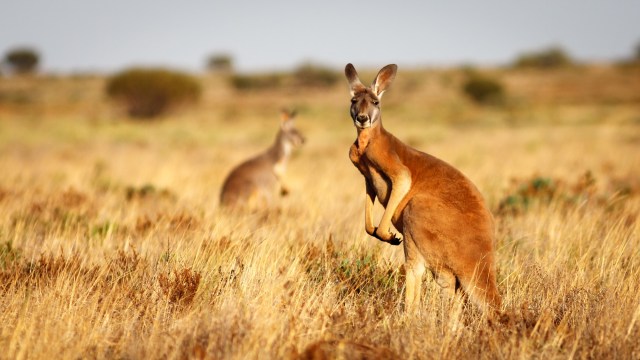Marsupials: Nature’s Pouch-Bearing Wonders and Their Special Adaptations

Marsupials are a unique group of mammals that have captivated scientists and nature enthusiasts alike with their remarkable characteristics. From their distinctive reproductive system to their specialized adaptations, these pouch-bearing wonders have evolved in fascinating ways. In this article, we will explore the unique characteristics of marsupials that set them apart from other mammals.
Reproductive System: The Pouch Advantage
One of the most distinguishing features of marsupials is their reproductive system, which sets them apart from placental mammals. Unlike placental mammals where the embryo develops internally in the uterus, marsupials give birth to tiny, underdeveloped young called joeys. These joeys then crawl into the mother’s pouch where they complete their development.
The pouch serves as a protective chamber for the offspring, providing warmth and nourishment through specialized mammary glands that produce milk. This unique reproductive strategy allows marsupial mothers to carry their young with them while leaving their limbs free for other activities such as foraging or climbing trees.
Diversity of Species: From Kangaroos to Koalas
Marsupials exhibit an impressive diversity of species, ranging from well-known animals like kangaroos and koalas to lesser-known ones such as quokkas and sugar gliders. Each species has its own set of adaptations that suit its specific habitat and lifestyle.
For example, kangaroos are renowned for their powerful hind legs, which enable them to hop at high speeds across vast distances. This adaptation is particularly useful in Australia’s dry landscapes where food resources may be widely scattered.
On the other hand, koalas have evolved specialized digestive systems that allow them to thrive on a diet primarily consisting of eucalyptus leaves. These leaves are tough and low in nutrients, but koalas have adapted by having an exceptionally long digestive tract to extract as much nutrition as possible from their food source.
Unique Physical Traits: Pouches and Prehensile Tails
Apart from their reproductive system, marsupials possess other unique physical traits that contribute to their survival in various environments. One such trait is the pouch, which is present in most marsupial species. The pouch varies in size and location depending on the species but serves the same purpose of protecting and nurturing the young.
Another remarkable adaptation seen in some marsupials is a prehensile tail. This specialized tail can grasp objects and provide additional support while climbing or moving through trees. For instance, the possums use their prehensile tails to hang from branches while searching for food or escaping predators.
Evolutionary Significance: An Ancient Lineage
The unique characteristics of marsupials have deep evolutionary roots, making them an ancient lineage that predates placental mammals. Fossil evidence suggests that marsupials existed alongside dinosaurs during the Mesozoic era, around 125 million years ago.
Their ability to adapt and thrive in diverse environments has allowed them to colonize various regions worldwide, with Australia being home to the greatest diversity of marsupial species today. This evolutionary success highlights the resilience of these unique mammals and their ability to carve out niches in different habitats.
In conclusion, marsupials are nature’s pouch-bearing wonders with a range of special adaptations that make them stand out among mammals. From their unique reproductive system and diverse species to their physical traits and evolutionary significance, these creatures continue to captivate scientists and nature lovers alike. Exploring the world of marsupials offers a glimpse into the marvels of nature’s ingenuity and reminds us of the incredible diversity found within our own planet’s wildlife.
This text was generated using a large language model, and select text has been reviewed and moderated for purposes such as readability.





